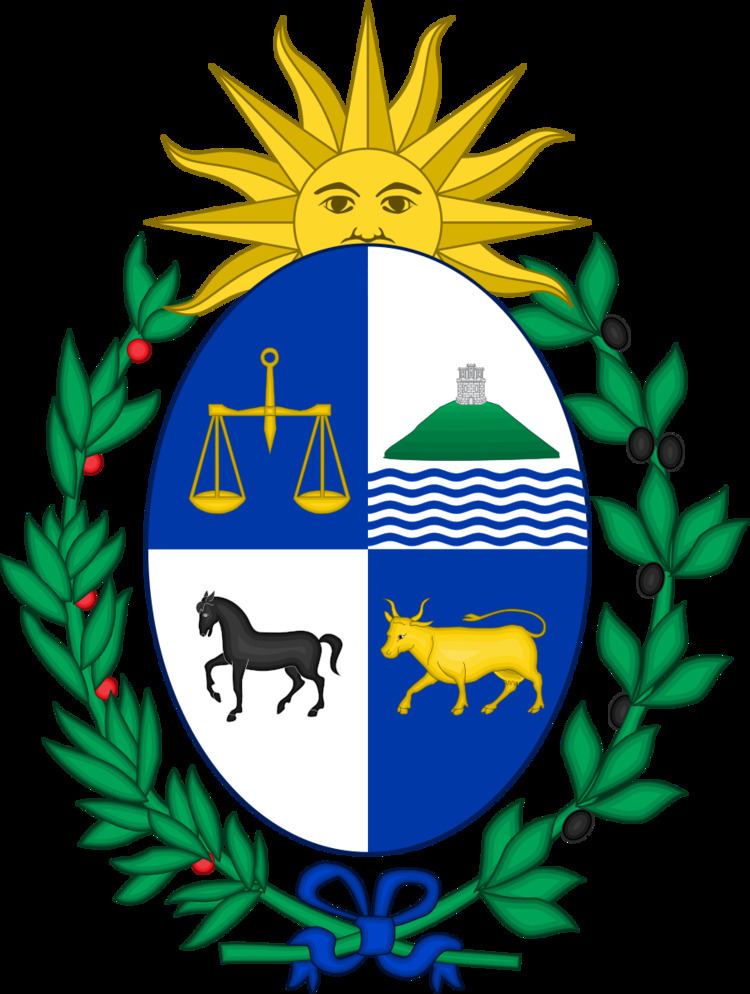 | ||
The politics of Uruguay abide by a presidential representative democratic republic, under which the President of Uruguay is both the head of state and the head of government, as well as a multiform party system. The president exercises executive power and legislative power and is vested in the two chambers of the General Assembly of Uruguay. The Judiciary branch is independent from that of the executive and legislature.
Contents
- Map of Uruguay
- Constitution
- Executive branch
- Legislative branch
- Judicial branch
- Direct democracy
- International organization participation
- References
Map of Uruguay
The Colorado and National parties have been locked in a power struggle, with the predominance of the Colorado party throughout most of Uruguay's history. The elections of 2004, however, brought the Encuentro Progresista-Frente Amplio-Nueva Mayoría, a coalition of socialists, former Tupamaros, communists, social democrats, and Christian Democrats among others to power with majorities in both houses of parliament. A majority vote elected President Tabaré Vázquez.
In 2009, the Broad Front once again won the elections with a plurality of the votes. A presidential runoff was triggered because their candidate, José Mujica, only received 47.96 percent of the vote. The Broad Front's candidate easily beat Luis Alberto Lacalle of the Nacional Party in second round of voting. In addition to the presidency, the Broad Front won a simple majority in the Uruguayan Senate and Congress.
Constitution
Uruguay adopted its first constitution in 1830, following the conclusion of a three-year war in which Argentina and Uruguay fought as a regional federation: the United Provinces of Río de la Plata. Sponsored by the United Kingdom, the 1828 Treaty of Montevideo built the foundations for a Uruguayan state and constitution. A constitution proposed under the military dictatorship government was rejected by a referendum in 1980.
Executive branch
Uruguay's Constitution of 1967 created a strong presidency, subject to legislative and judicial balance. Many of these provisions were suspended in 1973 but reestablished in 1985. The president, who is both the head of state and the head of government, is elected by popular vote for a five-year term, with the vice president elected on the same ticket. The President must act together with the Council of Ministers, which comprises cabinet ministers, appointed by the president. Thirteen ministers head various executive departments. The ministers can be removed by the General Assembly by a majority vote.
Legislative branch
The General Assembly (Asamblea General) has two chambers. The Chamber of Representatives (Cámara de Representantes) has 99 members, elected for a five-year term by proportional representation with at least two members per department. The Chamber of Senators (Cámara de Senadores) has 31 members; 30 members are elected for a five-year term by proportional representation and the Vice-president who presides over it.
Judicial branch
The Supreme Court is the highest court.
Direct democracy
The Uruguayan constitution allows citizens to challenge laws approved by Parliament by use of a referendum or to propose changes to the Constitution by the use of a plebiscite.
International organization participation
Uruguay or Uruguayan organizations participate in the following international organizations:
